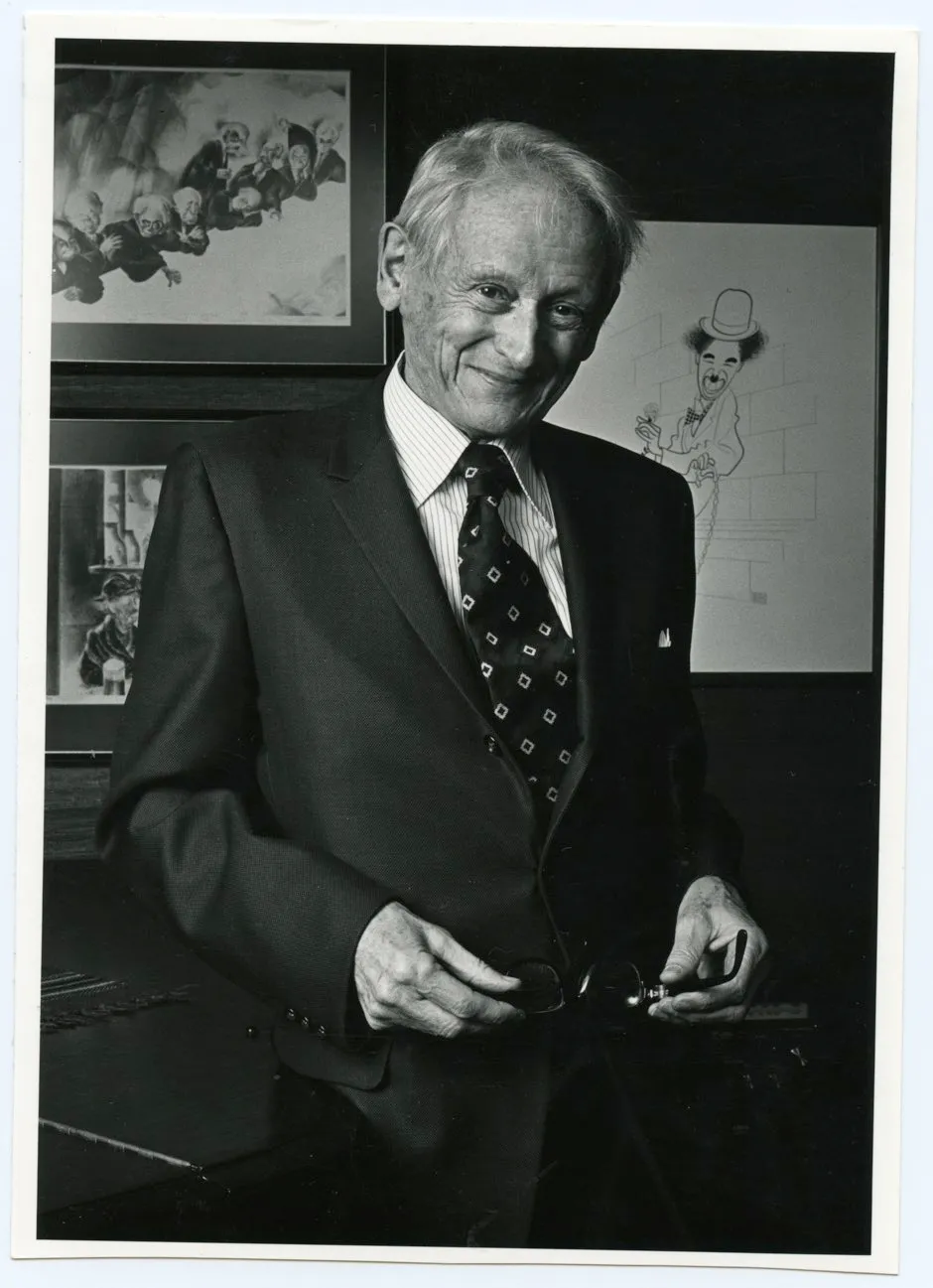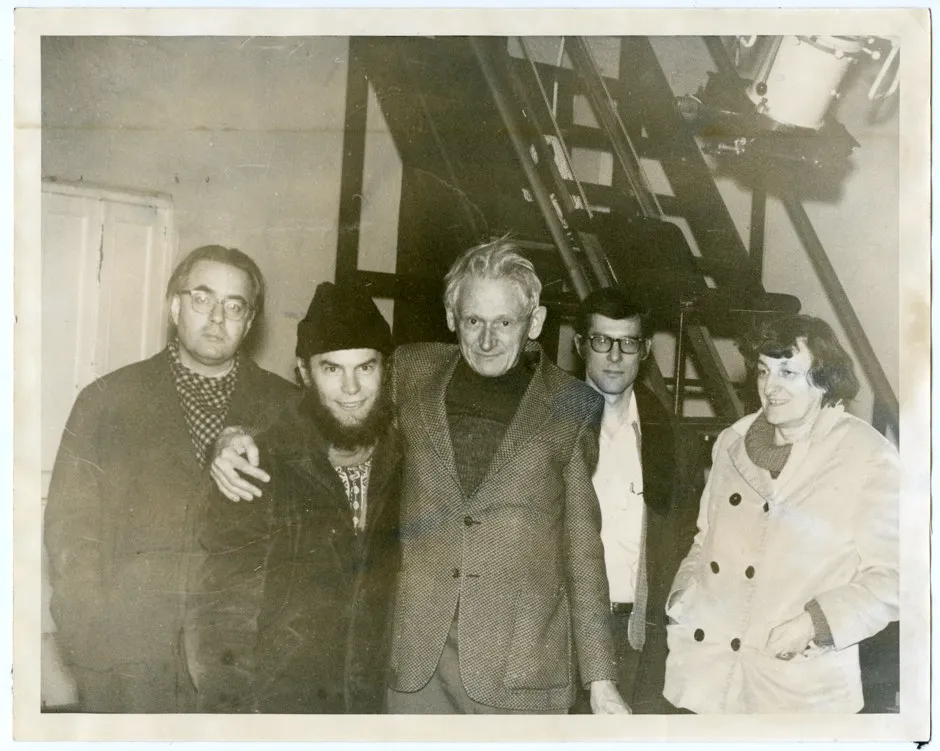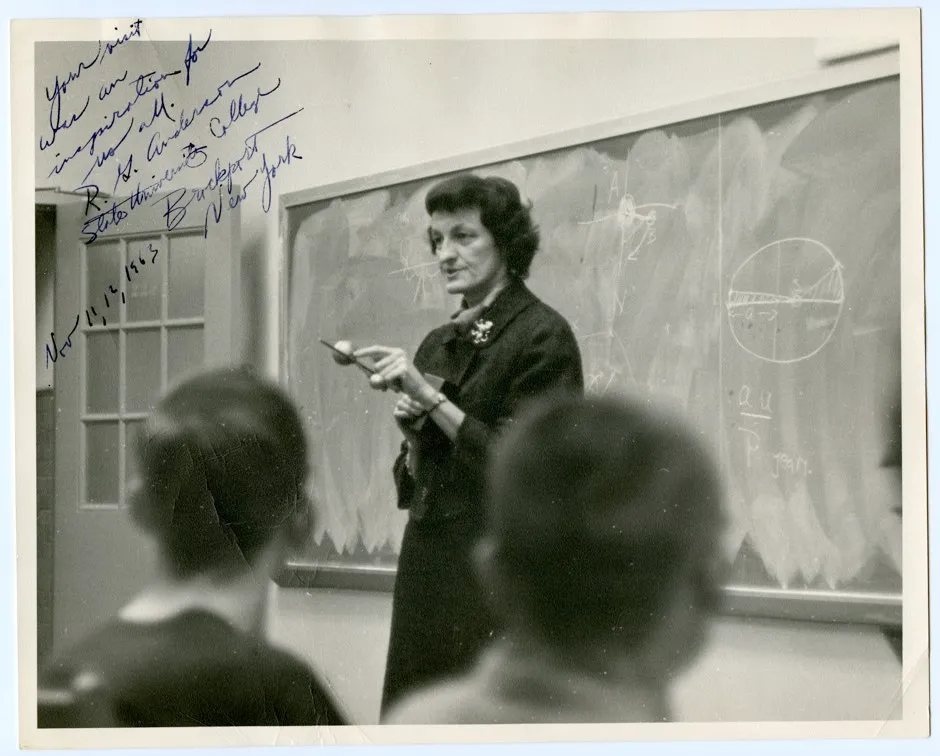Peter van de Kamp is, to some, a footnote in astronomy today. A trivia question at times. For some early exoplanet hunters, his name was even a bit of a career epitaph — the name you didn’t want to be associated with, so your evidence had better be air tight, or you’ll be another van de Kamp.
So who was he? The common view is this: Peter van de Kamp was a Dutch astronomer who thought he’d discovered the first planets outside our solar system. They were just two systems away around Barnard’s Star. But the planets, the source of his life’s work, were simply put, not there.
And indeed, time and time again, studies have failed anything like what van de Kamp proposed. His idea was more or less two gas giants, a Jupiter and a Saturn, if you will, around the tiny red star just six light years away, though the number of planets seemed to change.
This put them close enough to Earth that the British Interplanetary Society pinpointed the star as the place to visit in their feasibility study on nuclear propulsion known as Project Daedalus. Sure, the Alpha Centauris were closer, but they had no planets to speak of.
Read more about great astronomers:
- Fritz Zwicky: Part eccentric, part genius, completely uncontained
- Arthur Eddington: the champion of relativity
In 2018, a very un-van de Kampian world was found there. It was a few times the mass of Earth in a frigid location in its system. It’s closer to Barnard’s Star than Earth is to the Sun, but Barnard’s Star is just 14 per cent the mass of the Sun, so this distance makes it an inhospitable world.
Compare that to Proxima Centauri, a little less than two light years closer, which may have a habitable world, and you get a planet, finally, where we’ve long looked for one. But the Barnard’s Star planet isn’t anything like van de Kamp hoped to find, and it is strange and cold and unlikely to have life enough to send an interstellar ship there.
But there was something odd in the data too — something maybe the size of Neptune in a long orbit that, oddly, was within about the time span van de Kamp was claiming for his own planets. But the planet, if it exists (right now there’s some strong but inconclusive data) would be just a fraction of the size and would be unlikely to vindicate van de Kamp.
Still, his name deserves some esteem. He was a man on the right track. In hindsight, he was just living in the wrong time.
Double stars and planet-hunting
Peter van de Kamp came to Swarthmore College outside Philadelphia in 1937. Born in the Netherlands in 1901, he was part of a large cadre of Dutch astronomers coming to prominence in the era.
Adriaan van Maanen, with a strange dead star to his name, preceded this generation by a few decades, but the other names are familiar to many astronomy fans. Names like Gerard Kuiper, for whom the Kuiper Belt is named, or Jan Oort, whose name describes the realm of the solar system past the Kuiper Belt, the Oort Cloud.
Or there was Dirk Reuyl. He was van de Kamp’s cousin. And he, too, tried to claim one of the first planets outside our solar system. But his claims were disproven — by Peter van de Kamp. But let’s back up a little.

Van de Kamp came to Swarthmore to set about the double star program there. Many stars aren’t alone in the sky. The nearest star system, Alpha Centauri, actually has three stars. Two large stars orbit each other at the centre, while a smaller star, Proxima Centauri, orbits those two stars from a more distant location.
Sometimes, when stars orbit other stars (this is called a binary, at least when it’s two stars), both can be easily seen in the sky with a telescope, two points of light that easily resolve. Alpha Centauri A and B are roughly the same size, brightness and mass, so a decent telescope can make out two points of light, even though the stars are “just” 1.7 billion kilometres apart.
But other stars aren’t so easily resolved. Sometimes, one star dominates a system. This is the case of Sirius A and B. Sirius A is the brightest star in the night sky. But if you look up, you won’t see Sirius B. At least not without some high grade equipment a bit outside the price range of a common Celestron or Orion under the Christmas tree.
That’s because Sirius B is less than 1 per cent the radius of mighty Sirius A. It has this unusual smallness (think: the size of Earth) because it’s the dead remnant of a star like the sun that exhausted its fuel and became a white dwarf. Not only is it less than 1 per cent the radius, it’s less than 1 per cent the luminosity.
Read more about science history:
- Dragon breath, vomiting slugs and pigeon remedies: 8 bizarre medical stories from history
- The enduring puzzle of why cats always land on their feet
So how do you find something the size of Earth around a star twice as big as the sun? Well, Sirius B may be small, but it still has about the same mass as the sun, and Sirius A is only twice as massive.
So when you look at Sirius A in the sky, it doesn’t quite sit still like other stars. It deviates a little bit from a centre point. This is because one star doesn’t often cleanly orbit another. They find a mutual point of gravity to orbit in a big tug of war.
So in 1844, astronomers figured out that Sirius A didn’t sit still — and thus something invisible pulled on it. By 1862, it had been seen through a telescope. Over 30 years later, a similar invisible companion, Procyon B, was confirmed around the star Procyon A.

Thus, van de Kamp’s initial searches were for similar invisible companion stars. But there’s a twist to this. It’s not just stars that pull on each other from a common centre of mass. A star and a planet can come to a similar orbital stalemate that pulls one off its centre point in subtle ways.
By monitoring a star over time, you might — just might — be able to see it shift in place because of the movements of an invisible companion planet, something van de Kamp became a bit obsessed with.
By 1942, he and a protégé, Kaj Strand (a Dane in the midst of the Dutch astronomers of the era) proposed a “substellar companion” around 61 Cygni. Strand was doubling time between Allied military efforts and astronomy work, and there was a strange controversy that came about when someone impersonating a relative of Strand told the New York Times that the duo had named the planet 'Osiris'. (This was very much so not the case.)
This was just as Reuyl, van de Kamp’s cousin, was proposing a planet around 70 Ophiuchi, a star system that had been in the crosshairs of planet hunters since the 19th Century, with frequent claims with limited veracity but no actual success.
The most famous case, of one infamous astronomer named Thomas Jefferson Jackson See, was less famous for the scientific strength of the claim than the fact that See, a notorious crank, found himself nearly banned from the Astronomical Journal for how viciously he tried to attack someone who disputed his claims, a recurrent theme in his odious career.
61 Cygni, like 70 Ophiuchi, was a double star system with some seeming discrepancies in the motion of its stars. But the proof laid out by Strand and van de Kamp ultimately held out better than Reuyl and Erik Holberg’s claims.
It’s also one of several lost pieces in the exoplanet prehistory — Barnard’s Star wasn’t even the first van de Kamp-related exoplanet claim. It was the third.
The second was around Lalande 21185. Sarah Lee Lippincott, another van de Kamp protégé, was a driving force behind it, and was working on the proposed planet there around the same time she drew up the mass estimate and estimated distance of Ross 614B.
When the star was found by its own light in 1955 based on her prediction, it was a big success for the Sproul program. By 1963, van de Kamp was making his first official Barnard’s Star projections.
Thus, the planet search was always a part of a bigger program to finding invisible companions to stars, a program that — for Sproul — was massively successful, with Ross 614B as one of the bigger crowing successes.
That may have been the most unique discovery, but mass estimates made of other systems helped refine the size, mass and other details of many of our closest stellar neighbour.
But the problem with the planets lay in the technique.
The astrometry problem
Astrometry is a term encompassing finding the position of stars, often based on how they move in the sky in relation to each other. On the micro level, it can involve how the stars themselves move. Hence, looking for little changes caused by invisible stars or planets.
In the case of Sirius, A and B weren’t that dissimilar in mass. It’s easy to detect a displacement. It's the same with any star orbiting another (or their common centre of gravity, to get pedantic). But a planet is about one per cent the mass of its star, generously, at the higher end of planetary mass — 13 times the mass of Jupiter or less. The difference this makes in the sky is extremely tiny and hard to detect.
In fact, though this is the oldest planet-finding technique, it’s never found a confirmed planet.
This was the biggest undoing of van de Kamp. The kinds of changes a planet can make in a star are so small that the slightest bit of observational error can ruin a detection.

All sorts of reasons float around for the discrepancies at Barnard’s Star — and, as it ends up, so many others, including Epsilon Eridani, another star purported to have a van de Kampian planet. There’s the apocryphal story on the Swarthmore campus of a regional commuter train throwing off the telescope. Flaws in the lens are sometimes blamed.
There’s some evidence that the period of the planet corresponds to regular maintenance on the telescope. Little atmospheric blips can make a star appear to move. But any way you cut it,the planets were simply not there.
But there are other things to take from it. One is that van de Kamp was a researcher more prescient than the astronomy in-jokes suggest. For instance, he proposed that censuses of regions of the sky could look at several stars at once and figure out which ones were dimmed in their brightness very slightly by a planet crossing in front of them. This proved true with Kepler, NASA’s space telescope that revealed to us thousands of planets.
But perhaps most importantly, there was the idea of looking for planets via a wobbling star.
Looking for a star moving in place visually has only yielded objects at the small end in between the mass of a planet and the mass of a star, called brown dwarfs. But if you look at the spectra of a star — the breakdown of its light — little changes in the velocity of the star can reveal the movement of planets, in this case, proving that looking for a wobble is the right way to go.
The method of looking for changes in the speed of a star has yielded hundreds of planets since its first successful demonstration in 1988 with Gamma Cephei. By 1995, 51 Pegasi b was confirmed, the first bonafide planet around a sun-like star. It took a few years for astronomers to accept it and other new planets were real, partly because of so many errors before.
Read more about exoplanets:
But now, a little craft called Gaia may vindicate the astrometry technique within the next few years by finding planets via optical changes in its position. A new dataset in the coming years should find planets from space.
There are also the flourishes of who he was as a person — gregarious, progressive, popular on campus due to his outsized personality, a close friend and mentor of the rare woman in astronomy Sarah Lee Lippincott, who struggled against greater sexism in academia – that get lost in the dehumanising narrative of his biggest mistake.
We are, after all, better than our biggest mistakes, and the esteem van de Kamp left among colleagues was bigger and better than the planets he insisted on.
Van de Kamp died in 1995 mere months before the discovery of 51 Pegasi b; 25 years later, his technique may finally bear fruit. But his legacy will remain a continued strange part of the path to planet finding.
He may have been wrong — but he was wrong in all the right ways. Had he been born just a few decades later, he might have found the first genuine planets. But as it stands, he aided vastly in our understanding of stars near to us. His legacy is more than his mistakes — it’s part of the fabric of one of the most misunderstood stories in astronomy.
The Lost Planets: Peter van de Kamp and the Vanishing Planets Around Barnard’s Star by John Wenz is out now (£20, MIT Press).